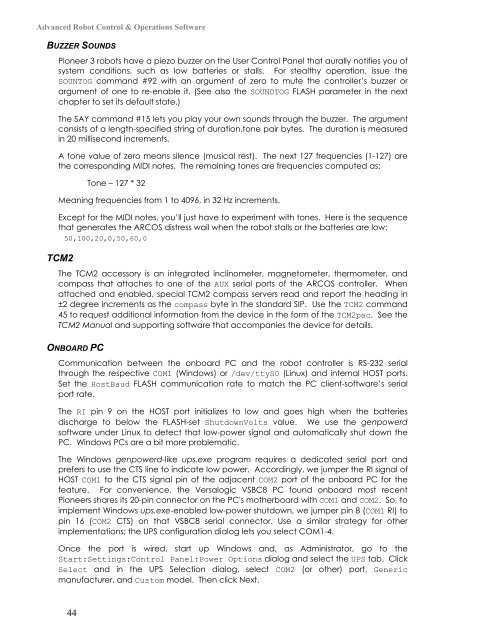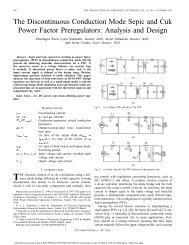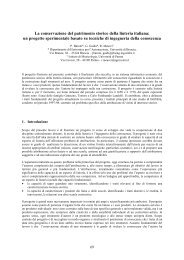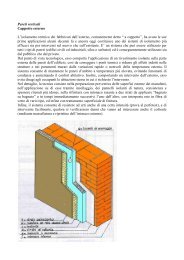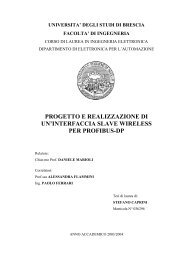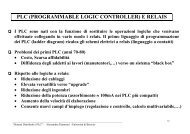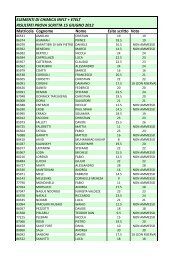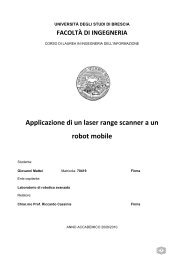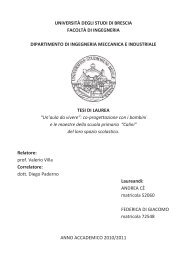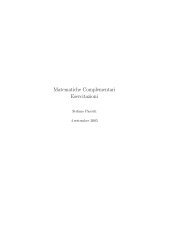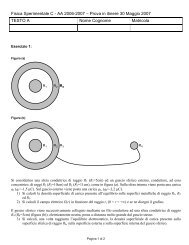Pioneer 3™ Operations Manual
Pioneer 3™ Operations Manual
Pioneer 3™ Operations Manual
You also want an ePaper? Increase the reach of your titles
YUMPU automatically turns print PDFs into web optimized ePapers that Google loves.
Advanced Robot Control & <strong>Operations</strong> Software<br />
BUZZER SOUNDS<br />
<strong>Pioneer</strong> 3 robots have a piezo buzzer on the User Control Panel that aurally notifies you of<br />
system conditions, such as low batteries or stalls. For stealthy operation, issue the<br />
SOUNTOG command #92 with an argument of zero to mute the controller’s buzzer or<br />
argument of one to re-enable it. (See also the SOUNDTOG FLASH parameter in the next<br />
chapter to set its default state.)<br />
The SAY command #15 lets you play your own sounds through the buzzer. The argument<br />
consists of a length-specified string of duration,tone pair bytes. The duration is measured<br />
in 20 millisecond increments.<br />
A tone value of zero means silence (musical rest). The next 127 frequencies (1-127) are<br />
the corresponding MIDI notes. The remaining tones are frequencies computed as:<br />
Tone – 127 * 32<br />
Meaning frequencies from 1 to 4096, in 32 Hz increments.<br />
Except for the MIDI notes, you’ll just have to experiment with tones. Here is the sequence<br />
that generates the ARCOS distress wail when the robot stalls or the batteries are low:<br />
50,100,20,0,50,60,0<br />
TCM2<br />
The TCM2 accessory is an integrated inclinometer, magnetometer, thermometer, and<br />
compass that attaches to one of the AUX serial ports of the ARCOS controller. When<br />
attached and enabled, special TCM2 compass servers read and report the heading in<br />
±2 degree increments as the compass byte in the standard SIP. Use the TCM2 command<br />
45 to request additional information from the device in the form of the TCM2pac. See the<br />
TCM2 <strong>Manual</strong> and supporting software that accompanies the device for details.<br />
ONBOARD PC<br />
Communication between the onboard PC and the robot controller is RS-232 serial<br />
through the respective COM1 (Windows) or /dev/ttyS0 (Linux) and internal HOST ports.<br />
Set the HostBaud FLASH communication rate to match the PC client-software’s serial<br />
port rate.<br />
The RI pin 9 on the HOST port initializes to low and goes high when the batteries<br />
discharge to below the FLASH-set ShutdownVolts value. We use the genpowerd<br />
software under Linux to detect that low-power signal and automatically shut down the<br />
PC. Windows PCs are a bit more problematic.<br />
The Windows genpowerd-like ups.exe program requires a dedicated serial port and<br />
prefers to use the CTS line to indicate low power. Accordingly, we jumper the RI signal of<br />
HOST COM1 to the CTS signal pin of the adjacent COM2 port of the onboard PC for the<br />
feature. For convenience, the Versalogic VSBC8 PC found onboard most recent<br />
<strong>Pioneer</strong>s shares its 20-pin connector on the PC's motherboard with COM1 and COM2. So, to<br />
implement Windows ups.exe-enabled low-power shutdown, we jumper pin 8 (COM1 RI) to<br />
pin 16 (COM2 CTS) on that VSBC8 serial connector. Use a similar strategy for other<br />
implementations; the UPS configuration dialog lets you select COM1-4.<br />
Once the port is wired, start up Windows and, as Administrator, go to the<br />
Start:Settings:Control Panel:Power Options dialog and select the UPS tab. Click<br />
Select and in the UPS Selection dialog, select COM2 (or other) port, Generic<br />
manufacturer, and Custom model. Then click Next.<br />
44


